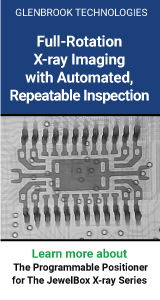|

|
|
| Ask the Experts | |||||||
|
|||||||
|
December 8, 2015 - Updated December 2, 2015 - Originally Posted Questions Regarding Underfill OptionsWe are being asked to apply a thermal compound layer of underfill under a SMT chip. Is there a standard that provides guidelines for too much, not enough, etc? If there is a hole on the secondary side of a CCA to apply this coating, what are some possible methods? R.W. |
|||||||
| Expert Panel Responses | |||||||
|
I would refer you the underfill manufacturer for their recommendations.
Technical Support Engineer Indium Corporation Kay Parker is a Technical Support Engineer based at Indium Corporation's headquarters in Clinton, N.Y. In this role she provides guidance and recommendations to customers related to process steps, equipment, techniques, and materials. She is also responsible for servicing the company's existing accounts and retaining new business.
There is IPC J-STD-030 Guideline for Selection and Application of Underfill Material for Flip Chip and other Micropackages. It provides all the information you need for your underfill process. To answer your second question; in all underfill methods I've worked with, the underfill was always applied from the top using automated equipment or directly onto the package prior to placement.
Senior Manufacturing Engineer Northrop Grumman Edithel is a chemical engineer with 20 year experience in manufacturing & process development for electronic contract manufacturers in US as well as some major OEM's. Involved in SMT, Reflow, Wave and other assembly operations entailing conformal coating and robotics.
Reader Comment
It's a bit difficult to answer this question without knowing all the applications details.
Dr. Hanzhuang Liang, Nordson ASYMTEK
In a capillary underfill process, the fluid is typically dispensed along one edge of the chip so that the fluid is pulled under the component. Whether you dispense too much or too little depends on the gap underneath the die. You also need to consider how much fluid needs to remain along the edge and what the keep-out zone should be around the die. You should see fluid on the other side of the die. There are a lot of papers that discuss how to calculate the optimal amount of fluid under the chip. In other underfill processes, high pressure can be used to drive fluid under the die. The fluid type typically used is a molding compound. If the fluid must be applied through a hole in the shield, there are several techniques that can be used, but depend upon the specific requirements and geometries of the part on hand. Contact me if you want to discuss this further. |
|||||||
| Submit A Comment | |||||||
|
Comments are reviewed prior to posting. You must include your full name to have your comments posted. We will not post your email address. |
|
Free Newsletter Subscription
Circuitnet is built for professionals who bear the responsibility of looking ahead, imagining the future, and preparing for it. Insert Your Email Address |
|

|




